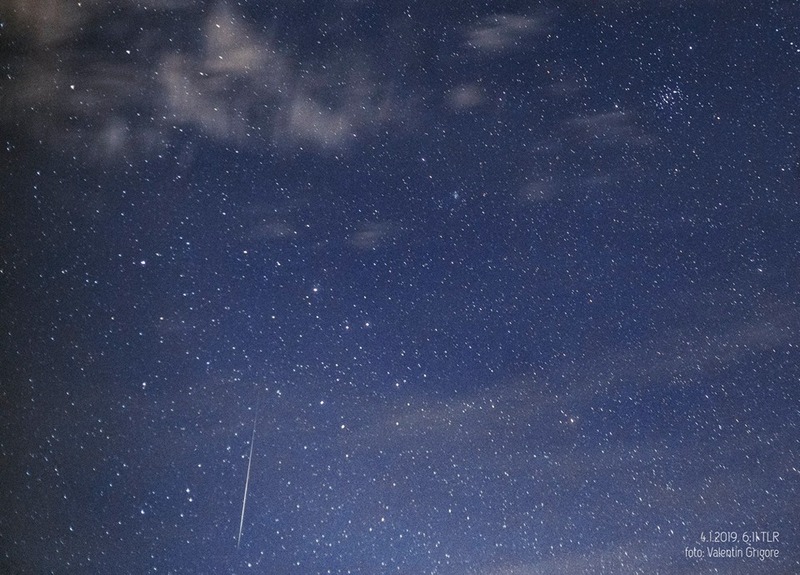FROM A METEORITIC FALL
TO THE STONE RAVENS
Introductory photo Valentin Grigore
Text and photos Andrei Dorian Gheorghe
Design Florin Alexandru Stancu
If a meteorite falls
You risk just losing your walls.

The picture from above was taken by Valentin Grigore in 2019-01-04
and represents a fireball from the Quadrantid meteor shower.
Probably an even bigger fireball produced a meteorite
which fell on Earth in older times
and provoked a major change in the Corbii de Piatra (Stone Ravens) zone,
resulting the strange aspect of the place.
I would say it looks similar to
the famous Rocks of Meteora in Greece,
or rather similar to the sceneries which,
thanks to the technologic progress,
we can see on the Moon or on the planet Mars,
two heavenly bodies which I photographed in Bucharest
in 2018-10-26 and 2018-11-03,
while the picture with the respective rock formation,
which seems appeared from nothing,
is from 2018-11-04,
the day of my visit over here.
The place has an interesting history.
Firstly, the antique Geto-Dacians made here an altar for sacrifices,
remnants from it remaining still visible at the entrance.
Then the first Christians made
a small artificial cave for prayers.
Their followers enlarged the cave,
transforming it into a rock church in the 14th century.
A visit in the 1290s
of the legendary founder of the Romanian Land (Wallachia),
Negru Voda,
gave a superior personality to this place,
which became a monastery in the 16th century,
when another ruler of Wallachia,
Neagoe Basarab,
made a small open-air tribunal here.
Also in that zone, Voicu Corvin was born;
he emigrated later to Transylvania,
where he was ennobled for bravery in fights;
his son, Iancu de Hunedoara (Janos Huniady)
became governor of Transylvania, regent of Hungary and “Athlete of Christ”,
stopping the Ottoman sultan Mehmed the Conqueror (of Constantinople)
at the Belgrade fortress in 1456;
his grandson, Matei Corvin (Mathias Corvinus)
became the greatest king of Hungary;
the phonetic connection is simple:
“corb” in Romanian is “corvus” in Latin
(in fact, there is even a constellation in the sky named so),
and Corvin comes from “corvus” (raven in English).
Inside, probably the remnants
of the first forms of religious art in Wallachia,
more paintings and sculptures,
from which I remarked one in which
the solar circle surrounds a cross.
Then, like in a tale,
the Sun awaited me outside with dream colors.
So that finally I abandoned myself
into the vision of the sunset.
*
© 2019 SARM
(Romanian Society for Meteors and Astronomy)